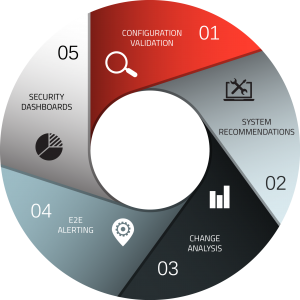Exploiting weak password hashes is one of the most common and successful attack scenarios used against SAP systems. The availability of open-source programs such as Hashcat and John the Ripper enables even novice hackers to perform attacks against SAP passwords. In fact, Hashcat is capable of breaking any SAP password encoded using the BCODE hash algorithm in a maximum of 20 hours, regardless of the length and complexity of the password.
SAP systems support a variety of cryptographic algorithms to convert passwords into hash values. These values are stored in table URS02. This is designed to prevent the storage of passwords in clear-text. During the logon procedure, passwords entered by users are converted to a hash value and compared to the value stored for the user in table USR02. The logon is successful if there is match between the two values.
Since hash algorithms are one-way, it is not possible to calculate passwords from hash values. However, it is possible to compare values generated by tools such as Hashcat to the values stored in SAP tables to break passwords providing both are encoded using the identical algorithm.
Therefore, it is critical to restrict the ability to read and extract password hash values in table USR02. This can be achieved by controlling direct access to database tables through SQL statements using firewall rules. The ability to read tables using generic table browsing tools accessible through transactions SE16, SE17 and SE11 should also be restricted and monitored.
Note that USR02 is not the only table containing password hash values. In some releases, hashes can also be found in tables USH02, USH02_ARC_TMP, VUSER001 and VUSR02_PWD. Such tables should be assigned to the authorization group SPWD (refer to Note 1484692). Access to table USRPWDHISTORY should also be restricted since attackers are often able to guess current passwords based on former passwords if users employ variations of the same password.
There should be similar restrictions on debugging and transport authorizations since these can also be used to access or export SAP tables containing password hashes.
Users with access to multiple systems or systems in different environments should be required to use different passwords for each system and environment. Passwords for productive systems should not be identical to those used to access development or test systems.
SAP password code versions A-E are based on the MD5 hashing algorithm. The hash values generated through this mechanism are stored in the table column BCODE. All MD5 hashes are susceptible to brute force and other password attacks. Code versions F and G use the SHA1 algorithm. SHA1 hashes are stored in the PASSCODE column. They are less vulnerable than MD5 hashes but can be broken if passwords are short and relatively non-complex. The most secure hashing algorithm supported by SAP systems is iterated salted SHA-1 in code version H. This mechanism uses random salts and a higher number of iterations to mitigate password attacks. Iterated salted SHA-1 hash values are stored in PWDSALTEDHASH.
SAP kernels should be upgraded to 7.02 or higher to support PWDSALTEDHASH hash values. For added security, default iterations and salt sizes can be increased using the login/password_hash_algorithm parameter.
Once this is performed, the profile parameter login/password_downwards_compatibility should be set to 0 to ensure only the strongest possible hash values are generated. CUA systems can be excluded from this requirement if they are connected to systems that do not support PWDSALTEDHASH.
The report CLEANUP_PASSWORD_HASH_VALUES should then be run to discover and remove redundant password hashes. There is a clear security risk if this is not performed. Attackers may be able to use passwords encoded in BCODE and PASSCODE hashes if users employ identical or similar passwords encoded in PWDSALTEDHASH.
Enforcing single sign-on (SSO) for all dialog users provides the optimal level of protection against password attacks by removing the need to store hashes altogether. However, once SSO is enabled, direct logons should be blocked through the parameter snc/accept_insecure_gui=U and by ensuring users are not exempted from SSO through settings in user records maintained in the SNC tab of SU01.
Taken together, these countermeasures should safeguard systems from dangerous password attacks aided by well-known and easily accessible tools that can be leveraged to take full control of SAP systems.
Update: A new version of Hashcat capable of cracking SAP code version H password hashes encoded using SHA-1 is currently in beta testing. You can learn more at http://hashcat.net/forum/thread-3804.html


